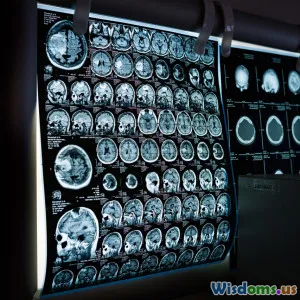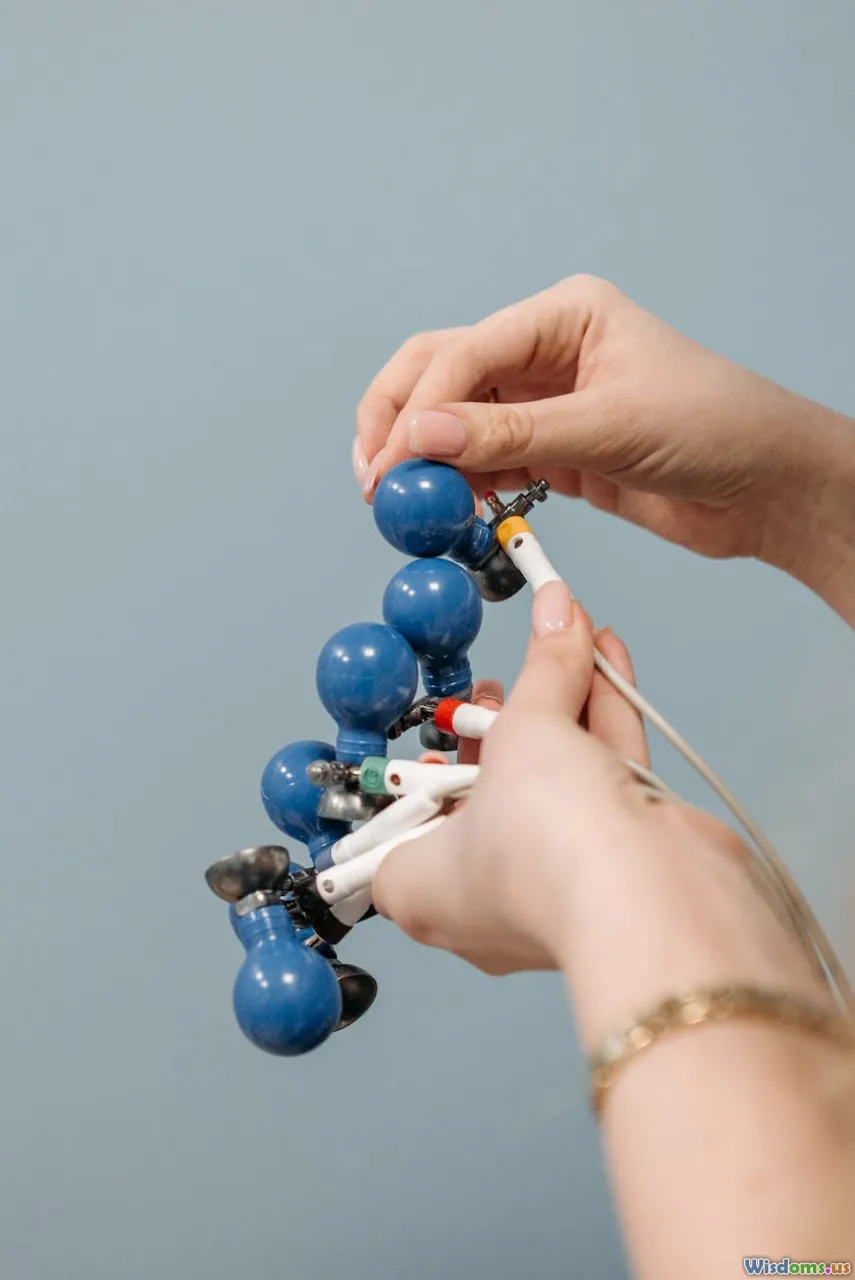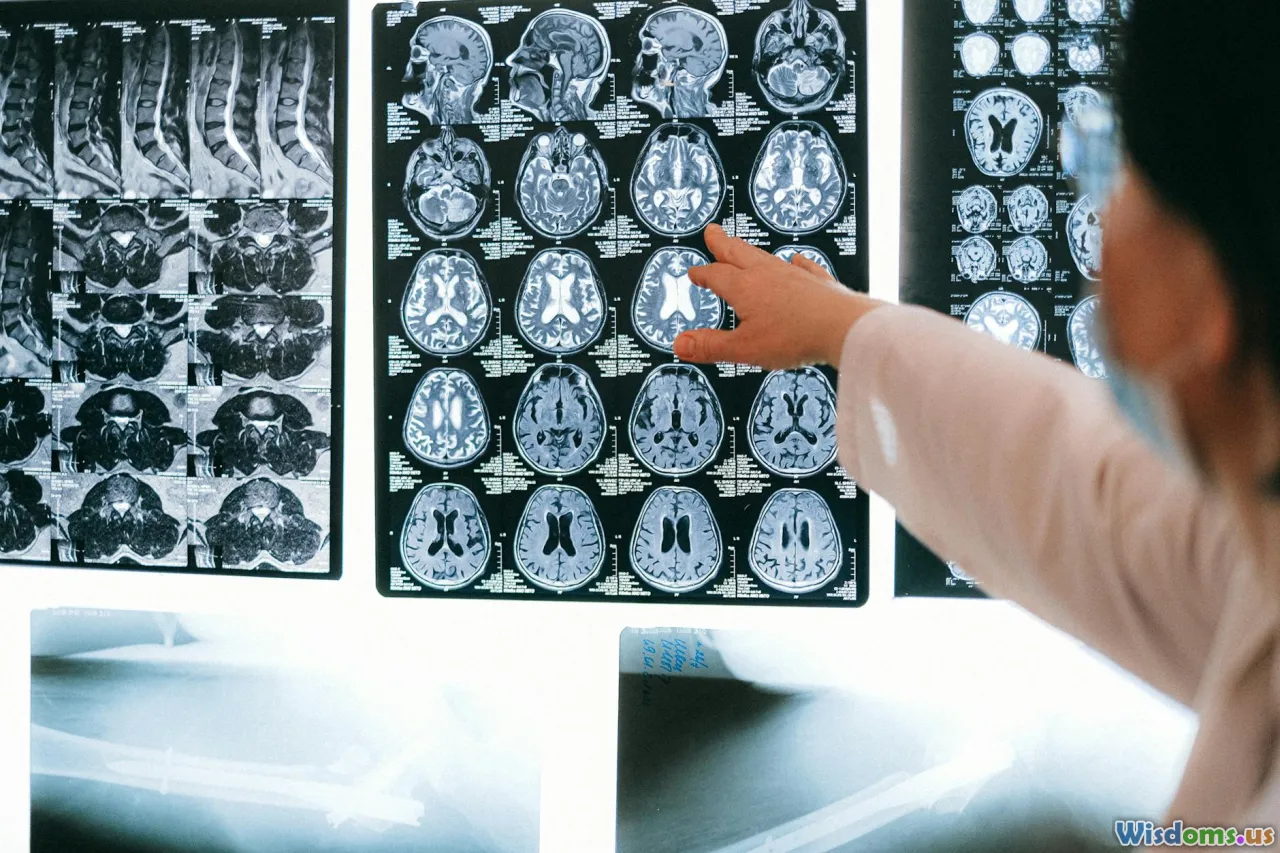
Five Breakthroughs That Changed Neuroscience in the Last Decade
14 min read Discover five landmark advances in neuroscience, from brain-machine interfaces to CRISPR, that have redefined our understanding of the brain in the past decade. (0 Reviews)
Five Breakthroughs That Changed Neuroscience in the Last Decade
The past ten years have been nothing short of transformative for neuroscience. Once limited by crude imaging and broad generalizations, the field has surged forward thanks to technological leaps, cross-disciplinary ingenuity, and the introduction of innovative methods. These seismic advancements are deeply relevant: they illuminate how our brains shape identity, behavior, and health, highlighting previously invisible processes. Explore five game-changing breakthroughs that have shaped modern neuroscience, offering not only new knowledge but fresh hope for treating neurological and psychiatric disorders.
Connectomics: Mapping the Brain at Unprecedented Detail

Despite the brain's mystique, understanding its wiring—how billions of neurons link up to power sensation, memory, and emotion—has long felt beyond reach. The rise of connectomics has fundamentally altered this picture. This field seeks to chart the “connectome”: a complete map of neural connections, differing by species, age, and individual brain.
Mapping the roundworm C. elegans neural network in the 1970s took over a decade. Compare this to today’s pace, driven by automation, machine learning, and powerful imaging tools. In 2021, researchers at the Allen Institute published a detailed map of the mouse visual cortex, revealing not only interwoven neural highways but also subtle, never-seen-before microcircuits. Using high-throughput electron microscopy, scientists can now visualize connections at nanometer scales and even reconstruct thousands of complete neurons—a previously unthinkable feat.
What’s revolutionary is scale and functional insight. Beyond static "maps," current studies merge structural data with recordings of living brain activity. For example, the Human Connectome Project uses diffusion MRI from thousands of people to produce some of the highest-resolution maps of the human brain yet, linking specific wiring configurations to traits like intelligence or mental illness risk.
Connectomics is already making impacts:
- Illuminating pathways disrupted in Alzheimer’s, schizophrenia, or autism.
- Providing new targets for therapies by revealing key hub neurons.
- Enabling compelling brain-computer interface research (BCI) by making neural signal sources clearer.
For neuroscientists and clinicians, this is akin to going from a road atlas to a dynamic satellite map—showing not just roads, but also traffic patterns, construction, and the changing city landscape.
Optogenetics: Precision Control of Neural Circuits

If mapping the brain is fundamental, interrogating its circuits with precision is the next frontier. Optogenetics—pioneered in the early 2000s and rapidly matured in the 2010s—has taken center stage for its almost sci-fi capabilities: using light to turn targeted groups of neurons on and off in living animals.
The principle is elegantly simple. By genetically engineering neurons to express light-sensitive ion channels (typically from algae), researchers can activate or inhibit these neurons with a flash of laser light delivered via fiber optics. This gives unprecedented control: while drugs or electrical stimulation affect whole brain areas rather blindly, optogenetics lets scientists identify which cells in what circuit produce a given behavior.
Lab breakthroughs abound:
- In 2019, Stanford researchers mapped precise neural circuits supporting social behaviors in mice, pinpointing the exact cells controlling aggression or friendliness.
- Optogenetic silencing has been used to quell epileptic seizures in real time, suggesting future clinical applications where lightning-speed intervention might be life-saving.
- In depression and Parkinson’s models, selective stimulation of deep-brain circuits reversed disease symptoms faster and with fewer side effects than drugs.
Beyond basic discovery, optogenetics is being combined with miniaturized electronics for wireless stimulation, and adapted to non-genetic methods (like chemogenetics)—paving the way for future therapies requiring only a light pulse, not pills or surgery.
CRISPR and Gene Editing: The Genome as a Neuroscientific Toolbox

Genetic manipulation transformed neuroscience in the late 20th century. But the last decade has witnessed something different—CRISPR-Cas9 technology, granting researchers the power to precisely “edit” genes almost as easily as sending a text message. For neuroscience, it’s been a paradigm shift.
This genome-editing tool enables scientists to:
- Snip out or replace sections of DNA with engineered precision, targeting not just single genes but entire families or regulatory elements.
- Introduce changes in living organisms (and even, with technical caution, in utero) to model virtually any brain condition. In 2018, for example, researchers created a series of mouse models reflecting rare neurological syndromes in just months—tasks that previously took years.
- Activate, silence, or mark specific neural genes to track where and when they function during development or disease.
One powerful application: examining the roughly 100+ genes associated with inherited risk for schizophrenia, autism, or epilepsy. By introducing human mutations into animal models or brain organoids (mini-brains grown in lab dishes), it's now possible to explore developmental derailments, synapse failures, or immune triggers at unprecedented depth.
CRISPR’s pace keeps accelerating: with innovations like CRISPRa/i (which turn genes on or off without cutting DNA), research has shifted from treating the genome as static code to a living program—with potential to rewire faulty neural circuits or even correct some inborn errors directly.
Already, gene editing is moving toward the clinic. Trials are ongoing for repairing faulty vision in rare retinal disorders; laboratory results hint at the eventual correction of certain forms of childhood epilepsy, muscular dystrophy, and even Huntington's disease.
Brain Organoids: Scaling Human Brain Development in a Dish

A major challenge for neuroscience is how little of the living human brain we can or should study directly. Ethical and technical limits left much to animal models, which don’t always capture human brain diseases. This bottleneck spurred the rise of 3D brain organoids: stem cell-derived, miniaturized, simplified versions of brain tissue grown in petri dishes.
Initially viewed as biological curiosities, brain organoids made headlines in 2013 when they began forming spontaneously organized layers reminiscent of the human cortex. Over the last decade, biotech advances have allowed researchers to fine-tune organoid growth, mimic specialized brain regions (forebrain, midbrain, retina), and even induce complex electrical patterns of activity resembling neonatal brainwaves.
Key impacts:
- Disease modeling: Autism, Zika virus brain infection, and rare neurodevelopmental disorders have all been replicated using patient-derived organoids. For example, in 2016, researchers showed that Zika impaired brain growth in organoids much as observed in infant microcephaly.
- Drug discovery: Compounds tested on neural organoids can speed evaluation while avoiding harm to live patients. This high-throughput approach is already producing promising candidates for intractable epilepsy.
- Evolutionary comparisons: By cultivating both human and non-human (chimp, macaque) organoids, researchers have started to pin down why our brain develops unique structures, and how small genetic tweaks lead to big cognitive differences.
Ethical considerations abound—what if organoids become complex enough to feel or "think"? Researchers tread carefully, reaffirming strict definitions, but the knowledge obtained has been vastly beneficial for understanding human-specific brain development and devising targeted interventions.
Neuroimaging Advances: Peering Deeper, Sharper, and Faster

Brain scanning tools have evolved from blurry, static images to live-action insights at millimeter—or even cellular—resolutions. Over the past decade, advances in neuroimaging, both in hard technology and computational processing, are untangling the living brain's hidden choreography.
Fast and Deep Functional Imaging
Traditionally, fMRI (functional magnetic resonance imaging) has tracked brain activity with a delay of seconds—fast enough for broad activity but too slow for thought's actual pace. New methods like magnetic resonance elastography, fast fMRI, and neurophotonics allow visualization of electrical and metabolic activity at milliseconds scale. In 2022, the Human Brain Project equipped high-field MRI scanners (7 Tesla and higher), enabling researchers to scan specific brain layers rather than just broad "zones."
Machine Learning: Extracting Signal from Noise
Recent imaging breakthroughs aren't just mechanical—they’re computational. Applying artificial intelligence (AI) to immense brain scan datasets has allowed scientists to spot hidden patterns linked to anxiety, aging, and even the earliest signs of neurodegeneration. For instance:
- Alzheimer's can be predicted up to several years before cognitive symptoms materialize by using AI to flag subtle brain changes.
- In research published in Nature, convolutional neural networks trained on vast fMRI libraries correctly classified patients with disorders like major depression and schizophrenia with accuracy above 75%, outperforming traditional diagnostic criteria.
Ultra-High-Resolution PET and Molecular Imaging
Positron emission tomography (PET) has grown so precise that, in 2021, researchers at the Karolinska Institute imaged amyloid plaques (hallmarks of Alzheimer’s) in living brains at single-plaque resolution—vital for tracking disease response to therapies in real time.
These developments are rapidly crossing into the clinic. Portable MRI systems in emergency rooms, non-invasive monitoring of neurochemical shifts in Parkinson's outpatients, and personalized imaging-driven diagnosis for stroke, dementia, and epilepsy—all are now routine or arriving soon.
The Road Ahead: Integration, Insights, and Healing

Each of these breakthroughs stands tall on its own, but their true promise emerges in integration. It’s now feasible to map, manipulate, and monitor the brain across multiple layers—from genes and molecules up to circuit motifs and actual behaviors—in a coordinated, patient-specific manner.
The synergy extends to care: Personalized medicine in neurology is not a distant dream but an active area of translation, where gene edits informed by organoid studies, monitored by high-definition imaging, and calibrated by neural circuit mapping may soon treat previously untreatable conditions.
For professionals and the public, these advances encourage rethinking fundamental questions: What defines consciousness? How do genes and environment create diversity in the mind? What’s the boundary between natural limitations and treatable disease?
Looking forward, continued cross-pollination—between clinics and laboratories, bioinformatics and biophysics, engineers and ethicists—will be essential. As the tools for probing the brain get sharper, neuroscience edges ever closer to decoding the very essence of human experience. The coming decade will no doubt bring discoveries just as transformative, sustained by the vision and courage of those willing to follow the connections wherever they lead.
Rate the Post
User Reviews
Popular Posts

















